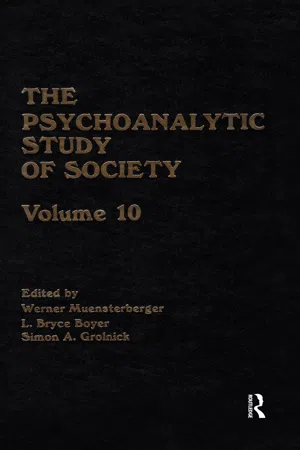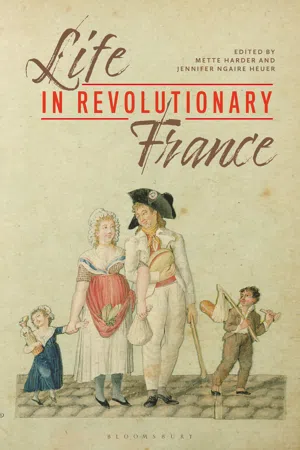History
King Louis XVI Execution
King Louis XVI, the last king of France before the French Revolution, was executed by guillotine on January 21, 1793. His execution marked a significant turning point in the revolution and symbolized the end of the monarchy in France. The event had far-reaching consequences, both within France and across Europe, as it contributed to the radicalization of the revolution and the rise of Napoleon Bonaparte.
Written by Perlego with AI-assistance
Related key terms
Related key terms
1 of 4
Related key terms
1 of 3
5 Key excerpts on "King Louis XVI Execution"
- eBook - ePub
Breaking Boundaries
Varieties of Liminality
- Agnes Horvath, Bjørn Thomassen, Harald Wydra, Agnes Horvath, Bjørn Thomassen, Harald Wydra(Authors)
- 2015(Publication Date)
- Berghahn Books(Publisher)
Part III Liminality and the Political Chapter 8 Liminality, the Execution of Louis XVI, and the Rise of Terror during the French Revolution Camil Francisc Roman T hirty years after being an eyewitness to the battle at Valmy, Goethe wrote of it that “from this place and from this day forth commences a new era in the world’s history, and you can all say that you were present at its birth” (Goethe 1849: 81). Back in Paris the National Convention proclaimed the republic on 22 September 1792, and less than two months later, the revolutionaries began the trial of Louis XVI. The revolutionary armies’ first victory, in a battle that was nothing more than a daylong exchange of artillery fire, 1 gave the revolution inside France the time and confidence to continue its course. In this context, among the many events that made up the life substance of the French revolution, the trial and execution of “Louis the Last,” as the king was “celebrated” by many of the regicides, stand out as key moments. These occurrences marked the apex of two congruent social processes that were unfolding at the time: the regress of royal power and charisma, and the consolidation of a new democratic community of experience. The historical centrality of the king’s death was maybe best recognized and brilliantly hyperbolized in Albert Camus’ The Rebel, where the philosopher asserted that “the condemnation of the king is at the crux of our contemporary history. It symbolizes the secularization of our history and the dematerialization of the Christian God.” For him, the person who died on the scaffold was not Louis Capet, the ordinary man whom Saint-Just tried to exclude from the social contract, but “Louis appointed by divine right,” the consequence being that “with him, in a certain manner, died temporal Christianity” as well (Camus 2000: 90, 91) - eBook - ePub
The Man Who Thought He Was Napoleon
Toward a Political History of Madness
- Laure Murat, Deke Dusinberre, Deke Dusinberre(Authors)
- 2014(Publication Date)
- University of Chicago Press(Publisher)
The Tragic End of Louis XVI, Executed on January 21, 1793, on Place Louis XV . This highly popular color print depicts a critical moment in the ritual of the guillotine: exhibiting the decapitated head to the public like a trophy. Musée de la Ville de Paris, Musée Carnavalet, Paris. Photograph: Agence Bulloz. Photograph © RMN-Grand Palais/Art Resource, New York.The death of Louis XVI also confirmed and consecrated another obvious fact: the theater of political power, once restricted to Versailles, had shifted to Paris. The revolution was a drama being performed outdoors, in public. Right from the early days of 1789, François-René de Chateaubriand noted the effervescence of salons, cafés, and streets where everything became part of the spectacle of this “celebration of destruction.”6 From 1792 onward, the scaffold became a leading stage. “The theater of the guillotine,” added contemporary commentator Louis Sébastien Mercier, “was always ringed by an audience.”7 The executioner Sanson was the great coordinator of these “red masses” that drew daily crowds curious to see “the new play that could never have more than one performance,” as Camille Desmoulins ferociously quipped only months before his own head fell.8 Artists took up their places at the foot of the scaffold to capture the expressions on faces faced with death, whose public staging offered the hope that skilled pencils might decipher its mystery. A plethora of engravings were published, endlessly showing the executioner brandishing a bloody head by the hair. Final words were noted down, poses were recorded.Those sentenced to death, meanwhile, prepared to perform their final role. Imprisoned in Sainte-Pélagie, monarchist actress Louise Contat promised to sing a song of her own composing when she climbed the scaffold—a fate she was ultimately spared—which began with the lines, “On the scaffold shall I appear / for ’tis just another stage.”9 The distance between street and stage vanished. Révolutions de Paris indicated as much in a strikingly metaphorical comment designed to suggest that life was returning to normal the very afternoon of that most exceptional January 21, 1793. “The show carried on without interruption; everyone joined in, people danced on the edge of the former Louis XVI Bridge.”10 - eBook - ePub
Methodological and Ontological Principles of Observation and Analysis
Following and Analyzing Things and Beings in Our Everyday World
- François Cooren, Fabienne Malbois, François Cooren, Fabienne Malbois(Authors)
- 2018(Publication Date)
- Routledge(Publisher)
Public and the Nation that the absolutist power claimed to personally incarnate still 26 years ago. Here are Saint-Just’s words:The one who said: My people, my children; the one who said to breathe only for the happiness of the Nation, who said to be only happy about his pleasures, unhappy about his misfortunes. (…). That’s what Louis XVI was really like, invoking heaven when he was going to shed blood; everywhere he took the Nation’s place, and tried winning over the affections one has only to have for It.3What happened during the years that separated the excessive pride of Louis XV, who solemnly reminded the Parliament of Paris of “the sacred and immutable maxims” that “are engraved on the heart of every faithful Subject,” from the compelled humility of his heir, who reluctantly whispered, “I was the master then, I did what seemed good to me,” in front of the French National Assembly, which would condemn him to death for high treason against his people? Denying the King’s legislative and executive power but above all his personal inviolability, public regicide committed the founding act, the primitive scene of a new kind of government, that of the Nation (Walzer, 1974). Indeed, although the monarchy could survive thousands of assassinations, it was not able to survive one execution which, accomplished on behalf of the people, destroyed not only the empirical body of the King but also his “symbolic body” (Kantorowicz, 1957).Putting an end to the monarchy’s mystique and divine right, the public trial and execution of Louis XVI established a new conception of power, based upon an alternative figure of authority that had already pervaded the whole “mental apparatus” of the Old Regime society (Baker, 1990; Furet, 1978/1981; Ozouf, 1989/1996). This alternative authority was that of public opinion - eBook - ePub
- Werner Muensterberger, L. Bryce Boyer, Werner Muensterberger, L. Bryce Boyer, Simon A. Grolnick(Authors)
- 2020(Publication Date)
- Routledge(Publisher)
“roi medecin,, was evident in the ritual “healing” by the mere touch of the king of thousands stricken with scrofula, a form of tuberculosis popularly called “the King’s Evil.” Louis XVI touched some twenty-four hundred scrofula victims on the day after his consecration in 1775 (Walzer, 1974, p. 20). Just as the king’s touch was imbued with the power to heal, the executioner’s touch had the reverse effect, namely spreading the contagion associated with his taboo status.The king was also Christ-like by virtue of his connections with the sun around which revolves the universe. This is a traditional association covered by a vast literature.6 Suffice it to say, in the Versailles of Louis XIV this connection was most splendidly celebrated. He called his throne room the Salon d’Apollon and his emblem of the sun darting its rays upon the world became a standard feature of the royal iconography (Voltaire, 1961, pp. 269-270; Blunt, 1953, p. 337). In a conscious imitation of the sun, the kings of France performed a daily ritual of rising and setting. Therefore, when Charles-Henri Sanson executed Louis XVI, he was not killing an ordinary criminal. He was killing an idea, a symbology, an entire set of political, religious, and psychological concepts that had prevailed for centuries. Unlike the aftermath of an assassination, there would be no heir to replace the dead king. “For all effects and purposes,” writes Walzer (1974, p. 26), “the revolution marks the end of political fatherhood.”In Charles-Henri’s prayer before the blade of the Guillotine, various levels of the psychological history of the Sanson family were condensed with certain universal historical fantasies about kings, gods, and fathers into a private, obsessional religion. As a historical postscript, the Restoration (1815-1830) created a martyr cult out of Louis XVI’s death. January 21 was declared a national day of mourning and Louis’s will was the sacred text read at the official ceremony (Jordan, 1979, ch. XIII). - eBook - ePub
- Mette Harder, Jennifer Ngaire Heuer, Mette Harder, Jennifer Ngaire Heuer(Authors)
- 2020(Publication Date)
- Bloomsbury Academic(Publisher)
6 Crime, Law, and Justice Claire Cage We often associate the French Revolution with the dramatic spectacle of public executions by guillotine, but the spectacle of capital punishment had been a feature of French justice long before the Revolution. The philosopher Michel Foucault famously recounted the execution of the regicide Robert-François Damiens, a domestic servant who attempted to assassinate Louis XV. In March 1757, before a huge crowd in Paris, Damiens was brutally tortured. His flesh was burned and torn from his body, and he was drawn and quartered. But during the years following Damiens’s execution, a shift in cultural sensibilities led increasing numbers of French men and women to object to criminals suffering through painful modes of execution. Foucault thus traced a gradual shift in penal practices from torture to imprisonment as the dominant form of punishment and described associated changes in how people thought about power. 1 Shifting attitudes towards punishment also explain why the French revolutionaries adopted the guillotine, which was seen as a more humane mode of execution; and why some French citizens came to reject capital punishment altogether. Maximilien Robespierre, the revolutionary political leader most associated with the Terror, initially opposed the death penalty as barbaric, cruel, and ineffective. During the legislative debates in 1791 over the new penal code, Robespierre called upon legislators to “erase from the Code of the French the blood laws which call for judicial murder.” 2 His humanitarian concerns did not sway the majority of deputies, and the revolutionary State preserved the death penalty. Robespierre himself later made clear that exceptions should be made for the king, whom he voted to execute in 1793, and for others deemed traitors to the republic
Index pages curate the most relevant extracts from our library of academic textbooks. They’ve been created using an in-house natural language model (NLM), each adding context and meaning to key research topics.
Explore more topic indexes
Explore more topic indexes
1 of 6
Explore more topic indexes
1 of 4




